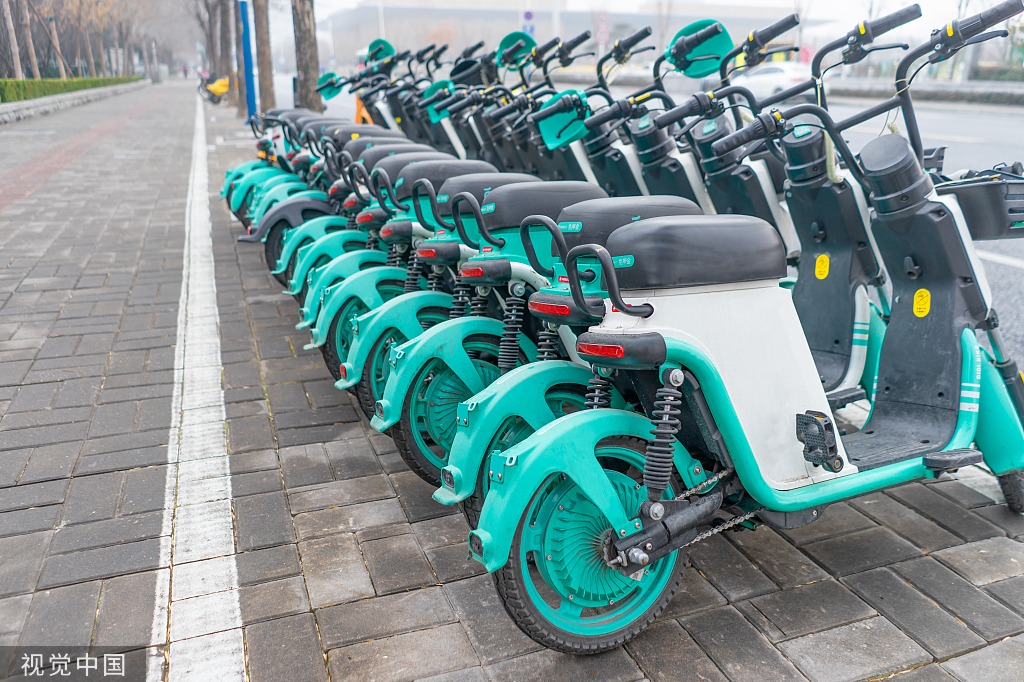Economy resilient, with vitality shown in sectors
By Yang Yiyong | China Daily | Updated: 2024-08-19 09:38

China's economy will hopefully continue to stabilize and improve as it still has much leeway for adjustments and remains resilient, if we consider indicators such as its potential economic growth rate.
The already-set all-round reform agenda is set to help the world's second-largest economy regain strong growth momentum and achieve its growth target for this year.
The term "potential economic growth rate" usually refers to the rate of economic growth that can be achieved by optimizing a combination of production factors under existing conditions. It represents the optimal growth level that a country or region can reach under conditions of optimal and full resource allocation.
According to estimates by various institutions and scholars, China's potential economic growth rate is currently between 5.5 percent and 6.5 percent. This range indicates that China's economic growth potential remains relatively large and is still at a mid-to-high level globally.
A report released by the BOC Research Institute, which is part of Bank of China, in January said that China's potential economic growth rate for 2021 and 2025 is calculated to stand at between 5 percent and 5.5 percent. It showed a cautious yet optimistic attitude toward China's potential economic growth in the coming years.
Some factors will have a bearing on a country's potential economic growth rate, including labor force scale, capital accumulation, technological progress and total factor productivity.
As the problem of aging intensifies and the population decreases, the scale of employment in China is expected to continue to shrink in the future, which will have a negative impact on its economic growth.
In recent years, the growth rate of China's fixed-asset investment has also slowed, and the contribution of capital formation to its GDP growth has correspondingly declined.
Although endogenous technological progress and improvements in total factor productivity are important ways to boost the potential economic growth rate, they require sustained innovation and R&D investment.
At present, China's economy still shows significant flexibility and strong resilience in the following aspects.
The nation's economy has been continuously recovering and improving, especially after the effective control of the COVID-19 pandemic, with economic activities rapidly resuming. Many international and commercial institutions have raised their expectations for China's economic growth, believing that the nation remains the biggest engine of global economic growth.
Additionally, as the impact of the pandemic diminishes and residents' income levels rise, China's consumer market has quickly rebounded. The performance in July this year was impressive. The contribution of domestic demand to economic growth is continuously increasing, becoming an important driving force for economic growth.
Currently, private investment, an essential part of the market economy, has shown improvement for two consecutive months, indicating that business confidence is being restored. This will help further stimulate market vitality and promote sustained economic growth.
The proportion of the services sector in China's economy is steadily increasing, and will become a significant driving force for economic growth. The expansion of the services sector helps reduce the unemployment rate, particularly among young people, and promotes high-quality economic development.
China's manufacturing industry is also gradually transforming and upgrading, moving from low-end manufacturing to high-end manufacturing. This will help enhance China's position in the global industrial chain and strengthen economic competitiveness.
In addition, China's fiscal deficit-to-GDP ratio and national debt-to-GDP ratio are relatively low, and monetary policy remains prudent.
This means that China still has ample space to implement more expansionary fiscal and monetary policies. It will help provide necessary economic stimulus when needed, maintaining stable economic growth.
As the national economy enters a new stage of development, macroeconomic policy allocation is becoming more precise. Allocating limited macro-control resources accurately to key areas will help improve policy effectiveness and promote high-quality economic development.
Moreover, despite sluggish global economic recovery and uncertainties in the international trade environment, China's foreign trade has continued to maintain positive growth. This shows that China's economy has strong international competitiveness and adaptability.
The renminbi exchange rate has remained relatively stable in a complex and volatile international environment, which helps boost the confidence of both domestic and foreign investors in China's economy.
However, to fully attain China's potential economic growth rate, comprehensively deepening reforms is the key.
Such efforts will promote the market-oriented allocation of production factors such as land, labor, capital, technology and data. By establishing and improving public data sharing and data transaction rules, and implementing reforms in higher education disciplines and specialties, the allocation of various factor resources has been optimized, and the productivity of unit factor resources has been improved, thereby continuously enhancing total factor productivity.
By deepening reforms, China will continue to break down industry barriers and promote market competition, enabling resources to flow more efficiently into areas with higher production efficiency and innovation capacity, thereby increasing the overall economic growth potential.
It will also stimulate the vitality of various market entities, especially the innovation vitality of private enterprises and small and medium-sized enterprises. These enterprises have become an important force driving economic growth by continuously exploring new market areas through technological innovation and model innovation, injecting new momentum into economic growth.
China regards innovation as the primary driving force for development, and through the implementation of an innovation-driven development strategy, it has strengthened technological, industrial and management innovation, continuously improving the quality and efficiency of the economy.
Deepening reforms will also promote the optimization and upgrading of the industrial structure, accelerating the transformation and upgrading of traditional industries and the cultivation and development of emerging industries.
By developing high-tech industries and strategic emerging industries, China has continuously improved its position in the global industrial and value chains, enhancing its economic competitiveness and sustainable development capacity.
China's economy is moving toward a green and low-carbon transformation. By developing industries such as clean energy and energy conservation and environmental protection, China has not only provided new momentum for economic growth, but also made a positive contribution to global efforts to combat climate change.
Nevertheless, new urbanization is an important way to unleash the potential of domestic demand. By accelerating the process of urbanization for the rural migrant population, the huge domestic demand potential of the agricultural migrant population in consumption and public investment has been unleashed, which will provide new momentum for economic growth.
With the increase in residents' income levels and changes in consumption concepts, China's consumer market shows a trend of consumption upgrading. Deepening reforms will promote the healthy development of the consumer market, providing consumers with a richer choice of goods and services, and promoting sustained growth in consumption.
According to data released by the National Bureau of Statistics, China's GDP grew by 5 percent year-on-year in the first half of 2024, showing that its economy has maintained stable growth in a complex and volatile domestic and international environment.
Currently, many institutions are optimistic about China's economic performance in the second half of the year, expecting economic growth to rebound after the gradual implementation of multiple policies. It is expected that the country will achieve its full-year GDP growth rate target of around 5 percent.
The writer is a senior researcher at the Academy of Macroeconomic Research, which is part of the National Development and Reform Commission.
The views don't necessarily reflect those of China Daily.
























